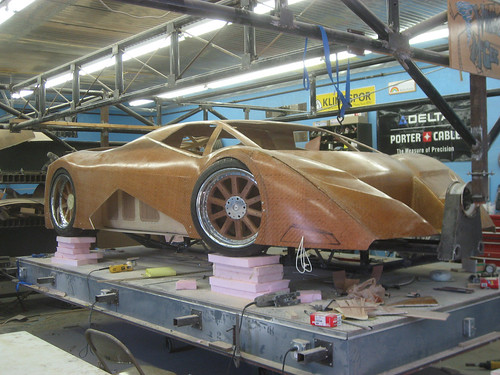I just got back last night from a week in New York. The guy who was the other resident at the Inside Passage while I was there, Pete Heilman, owns a large co-op shop in Brooklyn and last September I had a chance to check it out while I was out for Pete & Maura's wedding. Unfortunately though I was only out there for a few days, so when a seat sale came up last January I snapped up some cheap tickets and spent this past week hanging out, sight seeing, eating, etc.
Pete is in the very enviable position of living in a city where there is a built-in clientele for custom woodworking. New York City, particularly Manhattan, seems somewhat insulated from the economic trouble of the rest of the United States. Pete owns a 5000 square foot shop in an 'up and coming' area of Brooklyn, where he rents out space to other woodworkers as well cranks out various custom commissions with his own business, Heilman Design.

The morning I was there the guys were just loading a completed project in a van. Everyone was busy working on something so I just wandered around snapping pics.

Pete has been working for months on a cabinet to house medical journals. He's been picking away at it between other work. It looks to be near completion.

Pete recently moved his personal area upstairs - to be closer to the ping pong table maybe? While the bulk of the machine work goes on in the machine room downstairs, he moved a mini-max five-in-one upstairs as well. It's a nice little machine, and eliminates the need for him to run up and down the stairs for incidental machine work.

The machine room downstairs has all the usual stuff plus a 12" jointer, 10" cabinet saw, and two big sliding tablesaws.

The big daddy Northfield jointer got a complete re-haul when it showed up at the shop, and purrs like a kitten now. Pete said that blade changes are a real source of frustration though. I like the ship-wheel depth adjustment.

The front of the building is currently getting a sharp new facade made of Sapele and glass.

 I'm not certain what the state of the car is right now, except that they don't seem to be working on it at the moment. I have seen pictures of it at shows and what not, so I know that it is at least assembled, but I don't think they actually have it running.
I'm not certain what the state of the car is right now, except that they don't seem to be working on it at the moment. I have seen pictures of it at shows and what not, so I know that it is at least assembled, but I don't think they actually have it running.

